You are here
Nature of Central Asia.
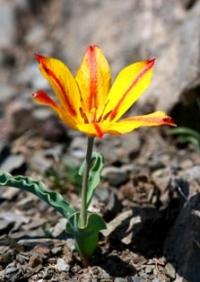
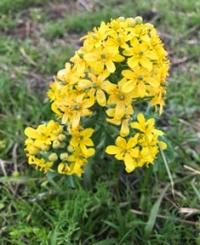
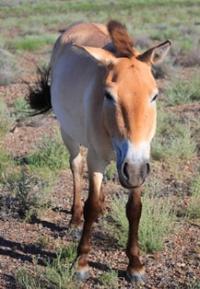
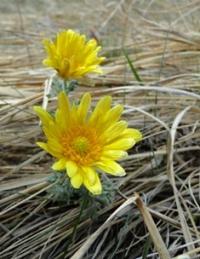
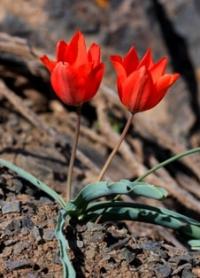
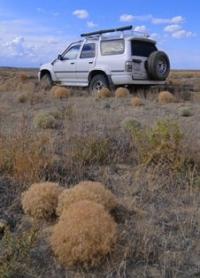
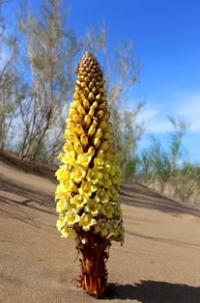
Tours to nature of Central Asia.
“Keep love in your heart. A life without it is like a sunless garden when the flowers are dead”
Oscar Wilde.
Seven Wonders of Kazakhstan.
The characteristic territory is characterized by originality and exceptional contrast of physical and geographical conditions. The plain landscapes here are replaced by mountainous, dull, monotonous landscapes - bright, colorful, majestic and picturesque.
In Central Asia, the highest mountains rise - Communism Peak in the Pamir (7495 meters above sea level), Victory Peak in the Tien-Shan (7439 meters above sea level) - and at the same time there are the lowest points in Central Asia - Karagie (“black jaws") in the southern part of Mangyshlak (- 132 meters), Akchakaya near the Ishek-Ankrenkyr plateau in the North-West Karakum (- 81 m).
Highest ranges and highlands with huge glaciers, eternal snow and highland tundra are located next to the hottest and driest deserts of our country. Relatively close to the huge icy streams and eternal snows of the Pamirs, in the middle reaches of the Amu Darya, in the Termez region, there is a “heat pole” in Central Asia.
On the desert plains of Central Asia there is very little rainfall (less than 100 mm per year in the center of the Turan lowland), but here, among the waterless deserts, there is one of the largest lakes in the world - the Aral Sea, which takes in powerful river arteries – Amu-Darya and Syr-Darya, crossing deserts.
These and other rivers, as well as large lake bodies of water, make a sharp contrast with deserted deserts. The peculiarity of nature in Central Asia and Central Kazakhstan is determined by the sharply continental and in large spaces desert climate, which is associated with the internal mainland and at the same time southern of Central Asia.
The position of the territory, with remoteness from the oceans, with mountain barriers fencing the country from the south and south the west and impeding the penetration of the Mediterranean cyclones and monsoons of South Asia.
Here the smallest rainfall in Central Asia and the largest evaporation from the surface of water bodies. Cool, and in the north harsh winter gives way to hot summer; significant annual and daily fluctuations in temperature, characterized by an abundance of hours of sunshine and great intensity of radiation.
On vast spaces it is a country of a cloudless sky, a scorching sun, deserts burned by the sun, where the main factor in the formation of the relief is the wind. The desert landscape also lies on the mountainous part of the country, but the contrasts of nature are especially striking here.
For example, in the Eastern Pamir, there is as little precipitation as on the most arid parts of the desert plains, and to the west, on the Pamir-Alay ridges, it falls in some places over 1000 mm per year; instead of highland deserts here are lush broadleaf forests of walnut, maple, fruit trees.
With the exception of the northern parts of the Kazakh Hills and the Turgai Plateau, which lie to the north of the Aral-Irtysh watershed, the territory described does not have water flow into the World Ocean or the seas associated with it.
The entire territory of Central Asia itself is an area of internal flow. Climatic peculiarities caused a pronounced seasonality of soil formation processes, especially the large role of parent rocks and salts in soil formation.
In the plant and animal world, there are amazing examples of adapting to geographical conditions, often extremely unfavorable. In the nature of the flora and fauna, the influence of the adjacent Iran-Mediterranean and Central Asian regions is pronounced.
Desert and semi-desert landscapes dominate over a larger area of the country. In the mountains, the high-altitude zonality of landscapes is more or less pronounced; it differs significantly in structure from the high-altitude zonality of the northern and western, less continental countries, for example, the Caucasus.
The warm climate of the plains, more precisely, long hot summer, fertile under the condition of artificial irrigation of the soil, the possibility of irrigation of vast areas, determined by topographic and hydrographic conditions, the abundance of flat and mountain pastures, a variety of minerals - oil, gas, coal, iron ores, color and rare metals, mining and chemical raw materials - all this creates favorable conditions for the development of the national economy of the Central Asian republics and Kazakhstan.
Central Asia is a country of ancient and new irrigated lands dominated by cotton, rice, grapes and fruit trees. Irrigated agriculture is developed in the north of Central Kazakhstan, as well as in the foothills and mountains. In the mountains of Central Asia, agriculture rises higher than anywhere else in Central Asia.
An important branch of the national economy is animal husbandry. Some information about Central Asia, including those borrowed from ancient Persian sources, we find from historians and geographers of ancient Greece and Rome.
At the end of VII century. Arab conquerors came to Central Asia. In the Arab literature of the Middle Ages, geographical information about Central Asia is found, with many of the original descriptions performed by natives of Khorezm, Balkh, Samarkand and Bukhara, including major scholars (al-Biruni). In the XIII century, the Mongols conquered Central Asia.
At this time, Western European travelers, such as Marco Polo, who visited at the end of the 13th century, visited here for the first time. Pamir. A great contribution to the study of Central Asia was made by Russian travelers. In the XVII century.
Ivan Khokhlov and Boris Pazukhin behind him and diplomatic missions went to Khiva and Bukhara. The expansion of the geographical knowledge of Asia was promoted by Peter I, who sought to develop Russian trade with distant countries and sent for this purpose trade intelligence officers, embassies and expeditions.
At the beginning of the XVIII century. An expedition of A. Bekovich-Cherkassky was working on the eastern shores of the Caspian. In 1722, the ambassador of Peter I, Ivan Unkovsky, visited Dzungaria and Tien-Shan. In the second half of the XVIII century.
In Bukhara, as a captive, lived for several years Philip Efremov, who described Bukhara, visiting Samarkand, Khiva, hiking through the Karakum and Kyzyl-Kum deserts, his escape through Fergana and Tien-Shan to Kashgaria, Tibet and India.
In the first half of the XIX century. the nature of the eastern coast of the Caspian Sea, Western Turkmenistan and Kazakhstan (including the Seven Rivers) was investigated by the famous naturalist G. S. Karelin. A new period of research (second half of the XIX century) is associated with the accession of the Central Asian territories to Russia.
It is characterized by the works of the largest Russian scientists and is a brilliant page in the history of Russian geography. The pioneer of the scientific study of the mountains of Central Asia was P. P. Semenov-Tian-Shansky, who made his famous journeys in 1856 - 1857.
He explored the Dzungar Alatau and the Tien-Shan, penetrated from the Issyk-Kul basin into the inner parts of the Tien-Shan, to the sources of Sarydzhaz and Naryn. N. A. Severtsov (1857, 1864 - 1878) made a geographical description of vast mountain systems and carried out important zoogeographic studies; A.P. Fedchenko (1869 - 1871) discovered the Zaalai Range in the Pamir-Alay system, studied its flora and fauna.
I. V. Mushketov (1874 - 1880) explored the Tien Shan, the Pamir-Alay, in particular the Northern Pamirs, made a great route along the Amu Darya. He gave a description of the geological structure and topography of Central Asia (in 2 volumes) and compiled its first geological map.
V. F. Oshanin (1878) first described the ridge of Peter the Great and opened the lower part of the Fedchenko Glacier; G. E. Grumm-Grzhimailo (1884–1887, 1911) explored all the major mountain systems of Central Asia.
The merits of botanists and geographers A. N. Krasnov, V. L. Komarov, and V. I. Lipsky are great. The first of them explored the Central Tien Shan (1886), the second - the Zeravshan valley (1892 - 1893), the third - the ridge of Peter the Great, and in particular its glaciers (1896 - 1899).
In the deserts of Central Asia in the second half of the XIX and early XX centuries. Worked: A. P. Fedchenko (1871), who explored the eastern part of the Kyzyl-Kum desert; V. A. Obruchev (1886 - 1888) and V. L. Komarov, who studied the Karakum.
L. S. Berg (1889 - 1906), who explored the Aral Sea and other lake basins, as well as the desert adjacent to the Aral Sea; S. S. Neustroev, who performed important soil-geographical research and established a new type of soil, which he called prairie gray soil (1910).
In 1912, a sand station was founded to study the processes characteristic of sandy deserts in Repetek (Kara-Kum). The Soviet period of geographical study of Central Asia and ventral Kazakhstan is marked by many new features. This is primarily mass, detailed and practical research.
The study of Central Asia are engaged in large specialized and complex expeditions. Especially important are the research of the expeditions of the Academy of Sciences of the USSR, the Academies of Sciences of the Union Republics, II IPG and MGG, the Ministry of Geology and Subsoil Protection (formerly the Committee on Geology), GUGC, Hydrometeorological Service of Uzbekistan, Tashkent University, etc.
Among the researchers in Central Asia during this period were such prominent scientists as A.Ye. Fersman and D.I. Shcherbakov, L.S. Berg, I.P. Gerasimov, S.V. Kalesnik, K.K. Markov, I. S. Shchukin and others.
Geologist-geomorphologist S. S. Schulz, botanist E. P. Korovin, zoologist D. N. Kashkarov, geographers N. L. Korzhenevsky, E. M. Murzaev and many others. As a result of the research, natural resources - mineral resources, hydro resources, land funds, and pasture resources - were identified. In the mountains and deserts, even in the highlands, on the Fedchenko Glacier, at the Petrov Glacier in the Inner Tien-Shan, there are hydrological posts, meteorological stations, and observatories.
The previously unexplored areas of mountains and deserts, which remained on white spots on pre-revolutionary maps, were studied, the entire territory of Central Asia is covered with accurate and detailed topographic survey.
In the process of research, important geographical discoveries were made: the ridge of the Academy of Sciences with the highest peak of Central Asia - the peak of Communism, the middle and upper parts of the huge Fedchenko glacier, the highest point of the Tien-Shan - the peak of Victory, the depths of the deepest troughs were discovered.
Authority:
N. A. Gvozdetsky, N. I. Mikhaylov. "Physical geography of the USSR. Asian part. The edition third corrected and added. Moscow "Thought" of 1978. http://tapemark.narod.ru/geograf/1_5_5.html
Photos by
Alexander Petrov.







